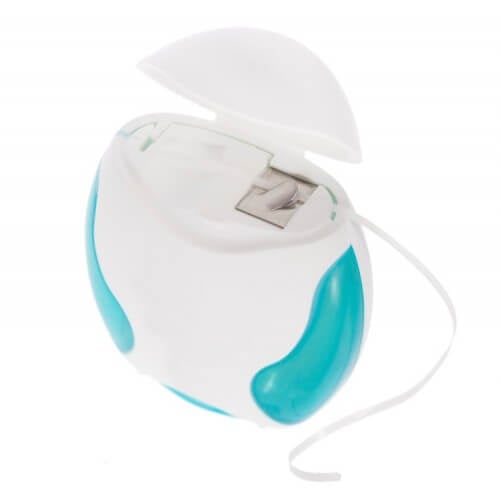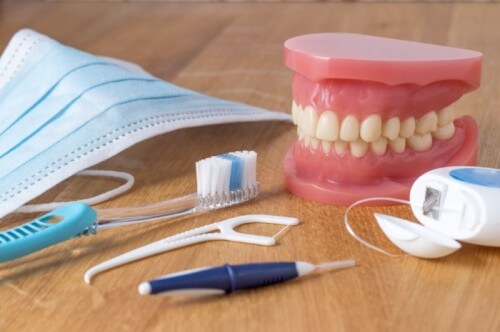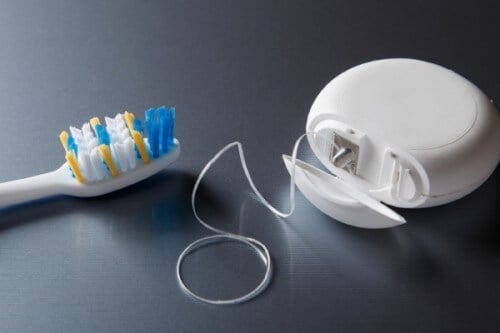If we chose our habits based on the latest headlines, we’d be caught in lurching chaos. One day we’d be popping Vitamin D, and throwing it out the next. In the 24/7 news storm driven by social media, midnight bloggers, and major news outlets, a flood of conflicting reports fill the insatiable demand for information. Now, even the credibility of flossing can’t escape controversy.

Recently, the Associated Press reviewed 25 studies that compared the use of a toothbrush with the use of a toothbrush and floss. The reporter concluded that the evidence for flossing is “weak, very unreliable” of “very low” quality, and carries a “moderate to large potential for bias.” This conclusion resulted in a knee-jerk deluge of headlines declaring How an AP Reporter Took Down Flossing and asking Are Americans Wasting $448 Million a Year on Dental Floss? Guilty non-flossers gloated under banners such as Flossing Fraud Exposed and Finally, The Floss Scam Is Up.
Before you casually dismiss a habit supporting better health while saving millions of dollars in healthcare costs since 1882, do yourself a favor: Take a step back and start with a 35,000-foot view.
Flossing And The Big Picture
Flossing is a simple, oral hygiene habit. Costing 1.1 cents per use and demanding .13% of your day to practice, it’s questionable whether the flossing controversy even warrants so much attention. And if you need much evidence of what flossing does, do your own experiment. Wrap it around the neck of a molar, slide it out and put it right under your nose. The visible bacterial film coupled with a foul stench might leave you pondering why anyone would bother funding a study on flossing effectiveness over a 20-year period. There must be more pressing issues to explore. When it comes to flossing, the words of one well-known brand fits: “Just Do It.”
Dental professionals tracking diligent, and not-so-diligent patients, tell you what scientific research has never fully established: Flossing helps prevent chronic, long-term dilemmas (like complete tooth loss) resulting from devastating oral diseases. The differences observed between these patient groups couldn’t be starker. Yes, properly designed longitudinal studies stretching over half a lifetime would lend credibility to flossing. But these costly, demanding projects aren’t easy to conduct. So condemning a simple hygiene habit at the risk of losing your teeth is a decision you’ll have to make.
“The condition we’re trying to prevent, which is gum disease, is something that takes years to develop, and most of the studies only last for a few weeks or months,” says Dr. Tim Iafolla, a dentist associated with the National Institutes of Health. “So the evidence that we gather from these studies is fairly indirect. We can look at bleeding gums, we can look at inflammation, but we have to extrapolate from that evidence to gum disease.”
The condemnation of flossing appears to come from extrapolating data as well. So if you’re going to weigh whether it’s worth roughly $4 annually to floss, consider the rest of the story, including the parts backed by substantial evidence.

Do You Want To Leave This Bacterial Sludge?
Dental plaque is a sticky biofilm with 70% of its dry weight coming from both beneficial and harmful bacteria. But after three weeks adhered to the teeth, the bacterial population shifts to a distinctive mix of organisms associated with gum disease in nearly half the population.[i] While your immunity and your body’s inflammatory response influence the occurrence and rate of disease, unremoved plaque amplifies an unnecessary risk.
Furthermore, in less than two weeks, plaque begins to mineralize and harden into tartar. This coral-like matrix provides a housing framework for more strains of harmful bacteria to embed around the teeth. And at this stage, floss won’t dislodge the hardened bacterial colonies.
Cavities afflict over 90% of the adult population, and a quarter of people over 60 have lost all of their teeth. As the pH of plaque drops from 7 to 5.5, the acidic wastes from bacterial sugar metabolism dissolve the mineral surfaces of teeth. Since plaque starts to re-form within 24 hours of removal, daily disruption of the sticky film from all surfaces remains a cornerstone of cavity prevention.
Twenty-five years ago, a peer-reviewed study considered the effectiveness of plaque removal with floss or a micro-brush slid between the teeth. While the micro-brush removed more plaque, both methods significantly reduced plaque compared to brushing alone.[ii] Other scientists confirmed these findings. In fact, one University study showed brushing and flossing resulted in half the gum inflammation as brushing alone, after just two weeks[iii]. If flossing contributed this much benefit so quickly, why would the healthy state not last throughout a lifetime? But the Associated Press chose to cite only studies that don’t confirm their anti-flossing position.
So if you’re comfortable leaving plaque on 50% of your tooth surfaces, then toss the floss. If you’re in the half of the population that deals with bone-dissolving periodontitis driven by plaque, then roll the dice. Research shows that areas with active gum disease flourish with up to ten times the bacterial numbers than non-disease sites.[iv] Is plaque worth leaving?
Flossing As A Catch-All Term

Since the 1800’s and the advent of flossing, many other methods for removing plaque from between the teeth developed. Who hasn’t heard of a toothpick, which pre-dates flossing? Research has even compared two different types of toothpicks, both of which demonstrated significant reductions in plaque.[v]
Most dental professionals readily acknowledge that the issue’s less about flossing and more about a consistent routine of cleaning between the teeth. Proper flossing remains a gold standard for aiding the process. But the best method is whichever method you’ll use, and many patients find techniques that work better for them than flossing. Oral irrigators offer a modern way of flushing away plaque in-between teeth, for example.
Dental professionals understand that cavities and gum disease result from a complex host of factors, and plaque control is just one piece of the puzzle. But the holistic approach to optimal dental health still incorporates the disruption of dental plaque with consistent cleaning of all tooth surfaces.
The danger with headlines that reject flossing is that you’ll then reject cleaning these areas entirely. In the book The Slight Edge: Turning Simple Disciplines into Massive Success and Happiness, author Jeff Olson reminds us of a critical point: Simple disciplines in all areas of life give you a slight daily advantage that you may not even notice in the short-term.
But over time, even a personal hygiene habit could easily be the difference between health and ailment. In this case, that could mean losing or saving your teeth. Furthermore, with current research linking periodontitis to heart disease, stroke, arthritis, and certain types of cancer, you may be risking even more.
TOSS THE FLOSS? YOU DECIDE
[i]http://www.ncbi.nlm.nih.gov/pubmed/15143484
[ii]http://www.ncbi.nlm.nih.gov/pubmed/1960236
[iii]http://www.joponline.org/doi/abs/10.1902/jop.1989.60.5.243